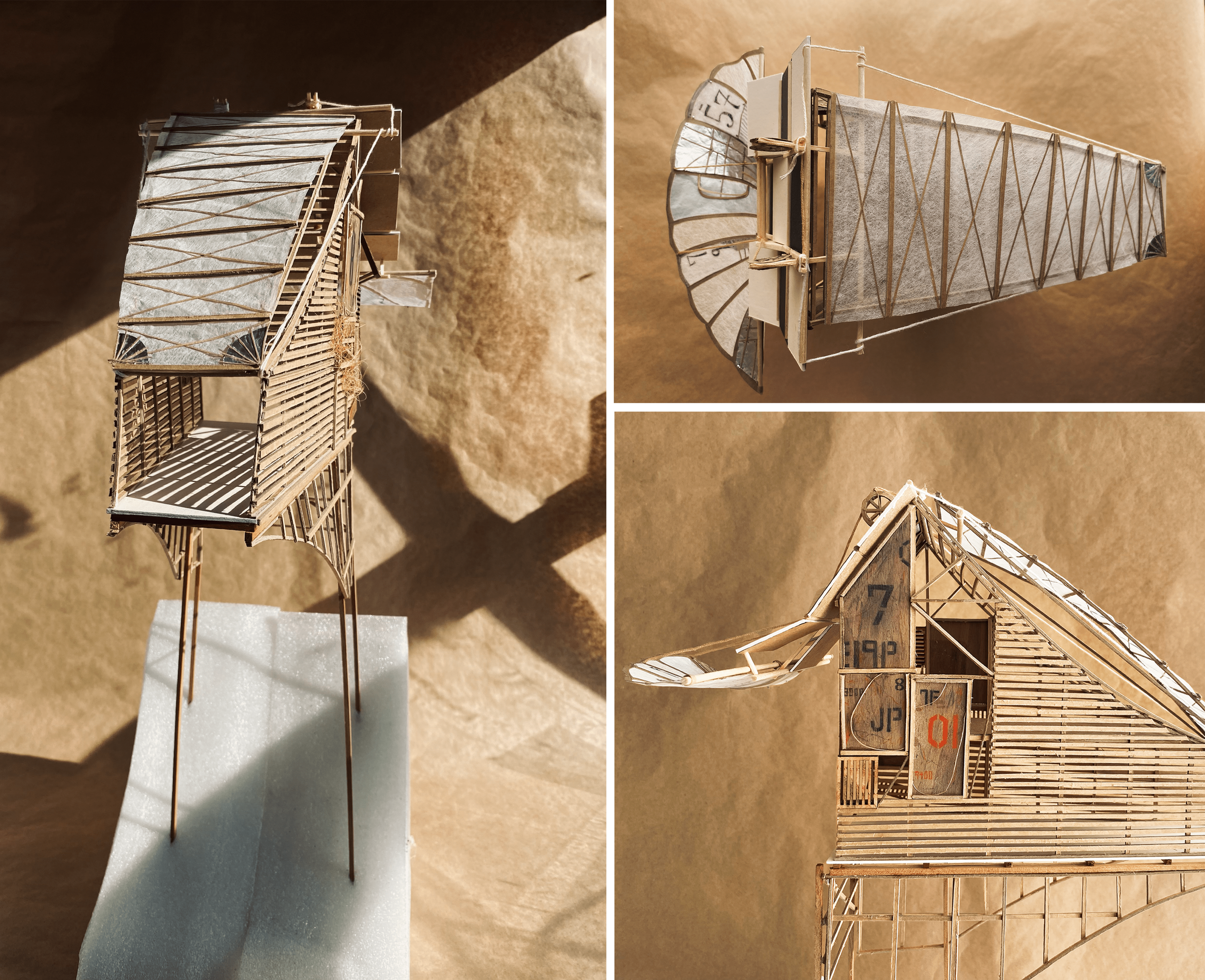Elim Hu
This week we are talking to Elim Hu, a Bachelors student at the University of Auckland!
We chat to her about her experience with architectural competitions and her media process… read on!
Kia ora, Elim! You’ve got a pretty extensive portfolio - what has been your favourite project so far?
My favourite brief so far is actually the current design paper I’m taking this semester for Design 5 with Chris Barton and Kim Sinclair. The paper is intertwined with the magic of film set design and how imaginative narratives and storytelling can inspire the process of generating ‘form’ - every element from the micro to the macro in design holds meaning.
D5: Dwelling in the Wrath of Nature. A tale of building resilience in the face of climatic adversity.
We were tasked to design a ‘home’ as part of our narrative with a prequel and a sequel. My project is called “Dwelling in the Wrath of Nature: A Tale of building Climate Resilience.” The year is 2100 and the irreversible impact of our climate has led to the exacerbation of sea level rise to the extent cities and farmland are submerged in water, forcing people to seek mountain peaks as the new highland topography. My narrative follows two pioneers and their nautical village of stilt houses clinging to the edge of Mitre Peak down in New Zealand’s South Island.
The typology of stilt houses is informed by my architectural response to the narrative of climate change and in my sequel (Part 2) these stilt houses are developed to transform into nautical inspired boat-home’s (with boat bellies and bioclimatic sail roofs) having the ability to migrate across peaks - detaching from its stilt legs when water rises until it floods the terrain. There is no fixed site contrary to our idea of ‘architecture as being associated with one site,’ instead the home is adaptable and resilient and always on the move with the environment.
I approached this brief by making 20 watercolour film storyboards in total to help with solidifying my Narrative and began on physical modelling early as a way to generate form.
This design process was new to me as I normally draw first and physically model at the end, but I found making physical models early helped me to arise at new ideas very quickly that wouldn’t have been conceived from 2d drawing. All of my models are made by sustainable materials - cardboard and paper and completely hand-cut.
What is your preferred media?
My favourite media is anything that engages with physical craft - whether that is drawing with the hand or model making. I find this media much more inspiring than working for hours on photoshop and staring at my screen. Though digital media and hybrid drawings enable much more efficiency, physical media helps me to think more deeply when designing - there is no barrier between the transfer of an idea onto paper - it is an immediate translation and the process allows for imperfection. I find that digital media normally lies at the end of my design process for presentation but the best ideas are from sketching on pen and paper. I use media as a tool to convey the narrative of my project in a visual sense and appreciate how architecture allows us to explore different forms of media.
In addition to your university workload, you’ve also been participating in competitions. How has the experience been?
My experience with architecture competitions has been both exciting and challenging at times, but the journey is often more enjoyable when you’re working with a friend - shoutout to Kelly Ting who I’ve worked with for a while haha the process has helped us both learn so much. Entering competitions opens the mind to wider facets of architecture and at the same time helps us to learn new skills and challenge our creativity. I’ve enjoyed the process of working as a team and appreciate the flexibility that comes with the designing for projects outside of university. It has benefited my approach to study at university as it's helped with refining media skills and coming up with ideas.
What are your plans for the future?
Well, long term plans for the future are often not set in stone as life is in constant flux, but for the short term my plan is to work towards a Master of Architecture, and hopefully see where life goes in the future.
A quote I take with me is, "Therefore do not worry about tomorrow, for tomorrow will worry about itself. Each day has enough trouble of its own.” - Matthew 6:34
Thank you, Elim, for sharing your amazing mahi with us! All the best for your studies!
Write up by Sakina Ali
Imagery and text provided by Elim Hu





